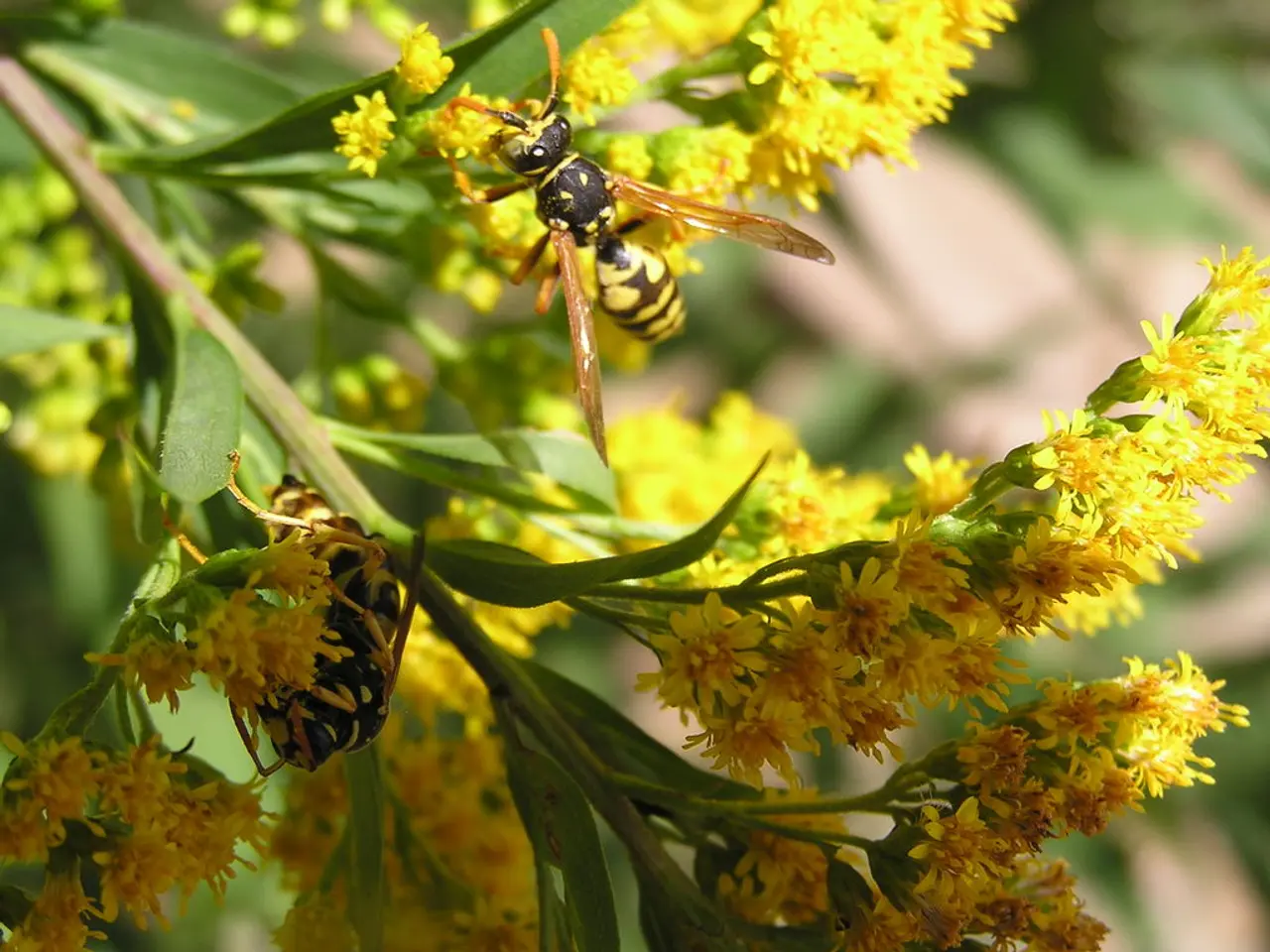Strategies for Controlling Pests in Home Vegetable Gardens Using Integrated Methods
In the realm of gardening, maintaining a thriving vegetable patch requires a delicate balance between nurturing plants and combating pests. Enter Integrated Pest Management (IPM), a smart and eco-friendly approach that has gained popularity among gardeners.
IPM is all about creating a harmonious ecosystem where plants, pests, and beneficial organisms coexist in balance. By incorporating IPM practices into your gardening routine, you can promote plant health, enhance biodiversity, and save money on costly pesticides.
Monitor and Inspect Regularly
Conduct weekly inspections of your plants, checking leaves carefully to detect pest eggs, larvae, or early signs of damage. Early detection allows simple interventions like handpicking pests or washing them off with water sprays.
Use Cultural Controls
Apply cultural practices such as crop rotation to disrupt pest and disease life cycles, select disease-resistant plant varieties, maintain proper plant spacing to reduce humidity (limiting fungal diseases), and employ sanitation by removing infected plant debris. Crop rotation also controls soil-borne pathogens and pests.
Encourage and Utilize Biological Controls
Promote natural predators like ladybugs, beneficial wasps, nematodes, and syrphid flies by providing suitable habitat and avoiding broad-spectrum pesticides that harm these allies.
Implement Mechanical and Physical Controls
Use physical barriers such as row covers to exclude pests like flea beetles and moths, fences to deter larger animals like deer and rabbits, and manually remove pests. Tools like motion-activated sprinklers and reflective tape provide additional deterrence.
Apply Chemical Controls Judiciously
Resort to chemical pesticides only as a last option, preferring targeted, environmentally friendly products such as organic fungicides (e.g., copper, sulfur). The goal is to minimize negative environmental impacts and preserve beneficial organisms.
Maintain Garden Hygiene and Proper Tool Care
Regularly disinfect gardening tools to prevent spreading diseases and remove weeds to reduce competition and pest habitats.
Leverage Technology or Expert Knowledge for Precise Management
Use AI-based monitoring systems or field scouting to identify pest hotspots, enabling precise and timely interventions.
These steps collectively form a sustainable approach to pest management by combining multiple techniques to keep pest populations under control while minimizing environmental impact and promoting plant health.
In summary, the key steps are:
- Monitor and scout regularly
- Use cultural controls (crop rotation, sanitation)
- Encourage biological controls (natural predators)
- Apply mechanical/physical controls (barriers, handpicking)
- Use chemical controls only when necessary and responsibly
- Maintain garden hygiene and tool sanitation
- Leverage technology or expert knowledge for precise management.
By adopting IPM practices, you can create a vibrant, pest-resistant vegetable garden that thrives without the burden of harmful chemicals. Happy gardening!
References: [1] National Pesticide Information Center. (2021). Integrated Pest Management. Retrieved from https://npic.orst.edu/ipm/ [2] University of California Agriculture and Natural Resources. (2021). Integrated Pest Management. Retrieved from https://ipm.ucanr.edu/ [3] Cornell University Cooperative Extension. (2021). Integrated Pest Management. Retrieved from https://nysipm.cornell.edu/ [4] Pennsylvania State University Extension. (2021). Integrated Pest Management. Retrieved from https://extension.psu.edu/integrated-pest-management
By adopting Integrated Pest Management (IPM) practices in your home-and-garden lifestyle, you can promote vegetable patch health and enhance biodiversity, all while saving money on costly pesticides. This eco-friendly approach involves regular monitoring of plants [Monitor and inspect regularly], employing cultural controls like crop rotation [Use cultural controls], encouraging biological controls with natural predators [Encourage and utilize biological controls], using mechanical and physical controls such as row covers [Implement mechanical and physical controls], applying chemical controls sparingly and responsibly [Apply chemical controls judiciously], maintaining garden hygiene and proper tool care [Maintain garden hygiene and proper tool care], and leveraging technology or expert knowledge [Leverage technology or expert knowledge for precise management]. By following this approach, you can create a thriving and pest-resistant vegetable garden within your own backyard gardening.




